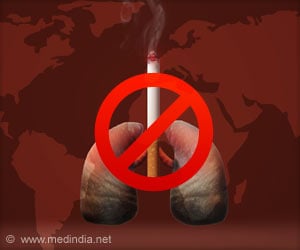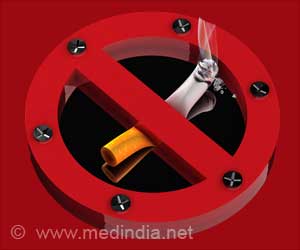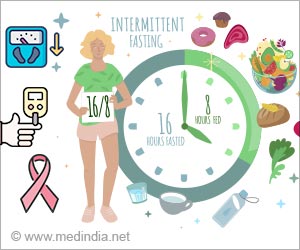World No Tobacco Day is celebrated on 31st May every year. It creates awareness about the dangers of tobacco use. Its long-term objective is to eradicate the use of tobacco products throughout the world.
- World No Tobacco Day is celebrated on 31st May every year
- It creates awareness about the harmful effects of tobacco
- It encourages people to kick the habit
- It aims to eradicate tobacco use globally in the long run
Read More..
History of World No Tobacco Day
The history of World No Tobacco Day goes back to 1987 when the WHO and its Member States started observing this day to draw the attention of the global community to the silent yet devastating tobacco epidemic and its associated preventable diseases and deaths.In 1987, the World Health Assembly (WHA) passed a resolution (WHA40.38) that stipulated that 7th April 1988 should be observed as World No Smoking Day. It was envisaged that abstaining from smoking for an entire day would help smokers to kick the habit.
That same year another resolution was passed (WHA42.19) that called for the observance of World No Tobacco Day annually on 31st May. Ever since, WHO and its partners have been celebrating this day, focusing on a specific tobacco-related theme each year.
World No Tobacco Day Theme for 2021: “Commit to Quit”
Every year, the WHO chooses a particular theme that focuses on the most relevant needs for that year, which sets the tobacco-related action plan for the following year. The theme helps to project a unified message for World No Tobacco Day, which is intended to catch the attention of the global community.Tobacco: Facts & Figures
- Tobacco is the only product that kills half of its consumers
- 1 million people die annually from exposure to second-hand smoke
- 25 percent of all cancer deaths are caused by tobacco products
- 7,000 chemicals are present in tobacco smoke, of which 69 cause cancer
- 66 percent of lung cancer deaths are caused by smoking
- Smokers are at a 2x and 4x higher risk of stroke and heart disease respectively
- 80 percent of tobacco users are from low- and middle-income countries (LMICs)
Tobacco: Environmental Impact
- Tobacco production emissions equate to 3 million transatlantic flights
- 200,000 hectares of land is used annually for tobacco agriculture and curing
- 300 cigarettes are produced at the cost of one tree for curing the tobacco leaves
- 2 million tons of waste are generated annually by the cigarette industry
- 5 cigarettes contain enough nicotine to kill an adult if ingested whole
What are the Health Benefits of Quitting Tobacco?
There are many benefits of quitting tobacco and these begin almost immediately and continue long-term. These are briefly highlighted below:- 20 Minutes: Heart rate and blood pressure drop
- 12 Hours: Carbon monoxide level in the blood drops to normal
- 2-12 Weeks: Blood circulation improves and lung function increases
- 1-9 Months: Coughing and shortness of breath decrease
- 1 Year: Risk of coronary heart disease (CHD) becomes half that of a smoker
- 5-15 Years: Risk of stroke reduces to that of a non-smoker
- 10 Years: Risk of lung cancer falls to half that of a smoker
- 10 Years: Risk of cancer of the mouth, throat, esophagus, bladder, cervix, and pancreas also decrease appreciably
- 15 Years: Risk of CHD falls to that of a non-smoker
Ways to Observe World No Tobacco Day in the Time of COVID-19
Despite the ongoing lockdown and stay-at-home orders, there are plenty of ways to virtually observe World No Tobacco Day. A few are highlighted below:- Educating Adolescents: Adolescents are the most vulnerable group to start smoking. They can be educated virtually about the dangers of smoking. It should be drilled into their heads that “if you don’t start, you won’t have to stop” or in other words “the best way to quit smoking is never to start in the first place”.
- Introspection and Contemplation: This is an ideal time to give some serious thought to health issues related to tobacco consumption. Introspection is the first step towards quitting. Once you realize the detrimental effects of tobacco on your health and how much money you’re spending on it, you’ll find the motivation to quit.
- Self-Realization: Simply counting the number of cigarettes you’re smoking throughout the day will make you realize how much damage you’re doing to yourself, as well as to your loved ones through passive smoking. This realization will act as a catalyst to strengthen your resolve to quit.
- Debunking Myths: Myths about the benefits of smoking that are propagated by tobacco companies as part of their business tactics to entice youngsters to smoke should be debunked. It is essential to reach out to this gullible group. This can be done through various social media platforms, such as Facebook, WhatsApp, and Twitter, among others.
- Empowering the Youth: Youths are the future of society. So, they need to be empowered with the appropriate knowledge about the harmful effects of smoking, so that they and their juniors don’t become hooked to this dangerous habit.
Conclusion
The foregoing discussion has highlighted the dangers of tobacco and the urgent need for quitting. Despite many good anti-tobacco initiatives, these campaigns have received stiff opposition from tobacco manufacturers in the past. But it is heartening to know that the trend is slowly but surely changing. Hence, we could attain the dream of a world free of tobacco in the near future.References:
- World No Tobacco Day - World Health Organization - (https://www.who.int/campaigns/world-no-tobacco-day)
- Tobacco: Health benefits of smoking cessation - World Health Organization - (https://www.who.int/news-room/q-a-detail/tobacco-health-benefits-of-smoking-cessation)
- Coronavirus disease (COVID-19): Tobacco - World Health Organization - (https://www.who.int/emergencies/diseases/novel-coronavirus-2019/question-and-answers-hub/q-a-detail/coronavirus-disease-covid-19-tobacco)
Source-Medindia













